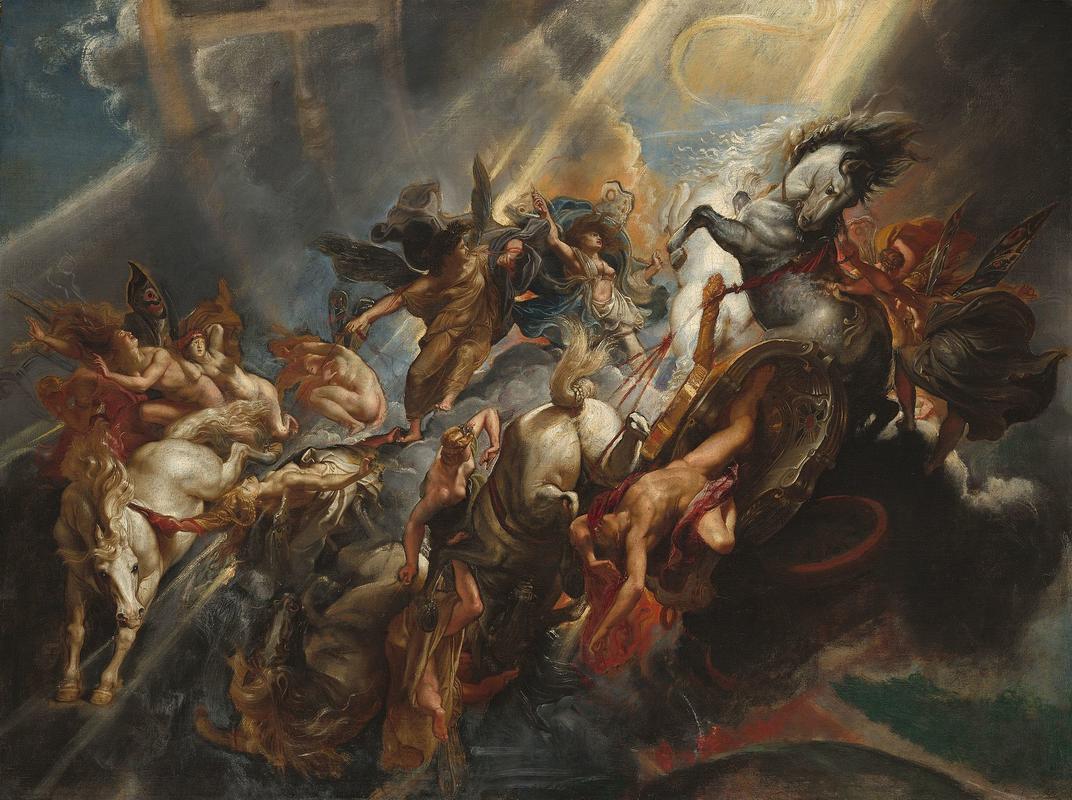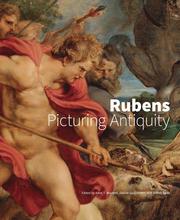More about The Fall of Phaeton
- All
- Info
- Shop

Contributor
The Fall of Phaeton by Peter Paul Rubens is beautiful chaos.
It all started when Phaeton wanted to drive his daddy, Apollo’s chariot of the sun across the sky. He was too young and too inexperienced for this but Apollo felt bad for being kind of a deadbeat father so he let him do it. This obviously resulted in complete and utter disaster. Phaeton couldn’t control the horses so they flew both too high and too close to the Earth, royally f*%@ing everything up. He literally set the Earth on fire and “even the great astrological bands that arch through the heavens [were] disrupted.” The ladies with wings, commonly known as the seasons, went to warn Jupiter (aka Zeus) that the world was ending and he ultimately threw a thunderbolt at the whole situation to stop the madness, which unfortunately resulted in Phaeton’s death.
It was all very dramatic, which means it was the perfect thing for Peter Paul Rubens to paint. It meant he could really show off his deep love of painting extreme facial expressions, overly muscular male physiques, and morally centered art – the moral here being a slew of messages that are as follows. 1) Beware of the leadership of children, something that has been absurdly relevant through history for no good reason. 2) It is a warning against “the devastating consequences of pride and lack of moderation.” And 3) Riding the chariot of the sun naked is never not going to end in either death or embarrassment, and will probably result in both.
This painting had been owned by a number of people before it landed in the National Gallery of Art. It was first documented in Antwerp in 1657. In 1775, it was sold by Christie’s to the collection of the Earls of Caledon. Then it went back to Christie’s to be sold in 1939, but under the name of Abraham van Diepenbeeck, a student of Rubens, by mistake. In the 1950’s they figured out the mistake and were exceedingly stoked. Then the National Gallery of Art came in with the big bucks and bought the painting for upwards of $3 million, though the exact number wasn’t revealed. The museum bought it with money from the Patrons' Permanent Fund as they couldn’t just drop $3 million like it was pocket change… even for a Rubens.
Sources
- Gamarekian, Barbara. "National Gallery To Show Rubens It Bought Recently." Nytimes.com. N.p., 1990. Web. 13 Feb. 2018.
- Richard, Paul. "NATIONAL GALLERY BUYS RUBEN." Washington Post. N.p., 1990. Web. 20 Mar. 2018.
- "The Fall Of Phaeton." Nga.gov. Web. 13 Feb. 2018.
- "The Fall Of Phaeton, 1604 By Peter Paul Rubens." Peterpaulrubens.net. Web. 13 Feb. 2018.
Featured Content
Here is what Wikipedia says about The Fall of Phaeton (Rubens)
The Fall of Phaeton is a painting by the Flemish master Peter Paul Rubens, featuring the ancient Greek myth of Phaeton (Phaethon), a recurring theme in visual arts. Rubens chose to depict the myth at the height of its action, with the thunderbolts hurled by Zeus to the right. The thunderbolts provide the light contrast to facilitate the display of horror on the faces of Phaeton, the horses and other figures while preserving the darkness of the event. The butterfly winged female figures represent the hours and seasons, who react in terror as the night and day cycle becomes disrupted. The great astrological circle that arches the heavens is also disrupted. The assemblage of bodies form a diagonal oval in the center, separating dark and light sides of the canvas. The bodies are arranged so as to assist the viewer's travel continually around that oval.
Rubens painted The Fall of Phaeton in Rome and the painting was probably reworked later around 1606–1608. It has been housed in the National Gallery of Art since 5 January 1990. Rubens also painted other Greek mythological subjects, such as The Fall of Icarus, Perseus Freeing Andromeda, and The Judgement of Paris.
Check out the full Wikipedia article about The Fall of Phaeton (Rubens)















